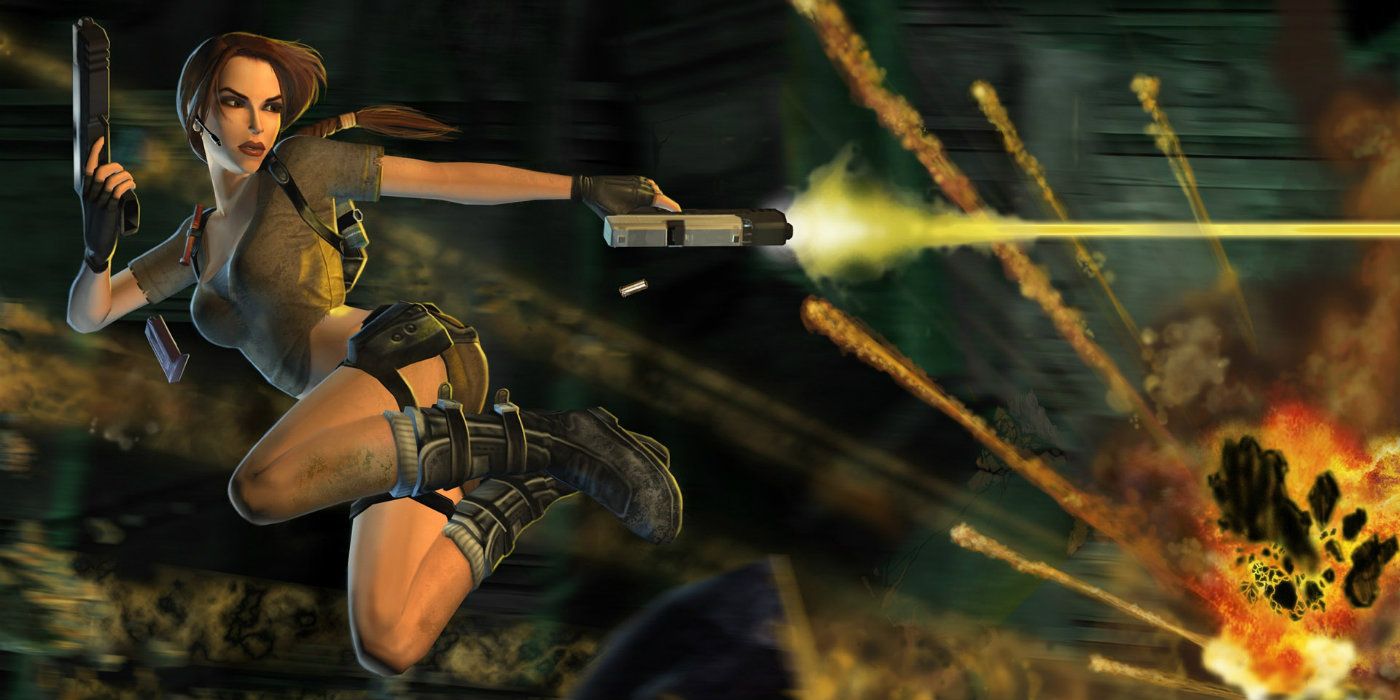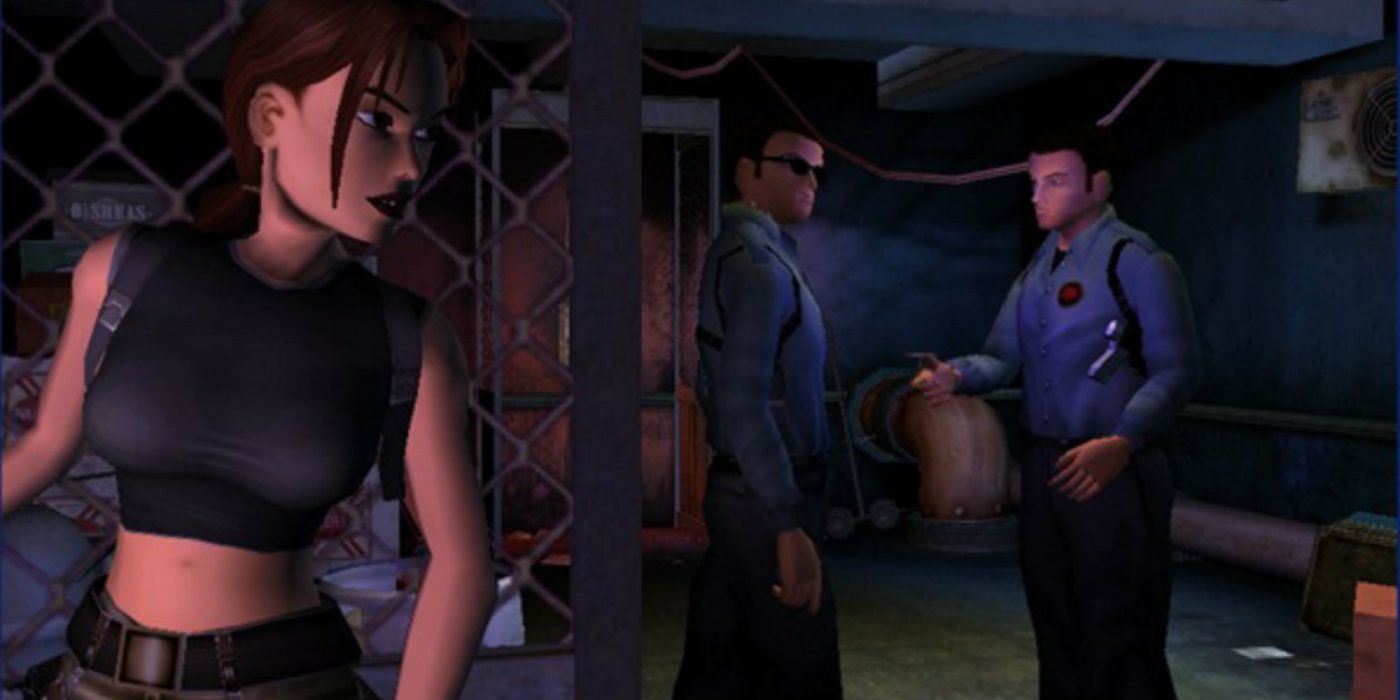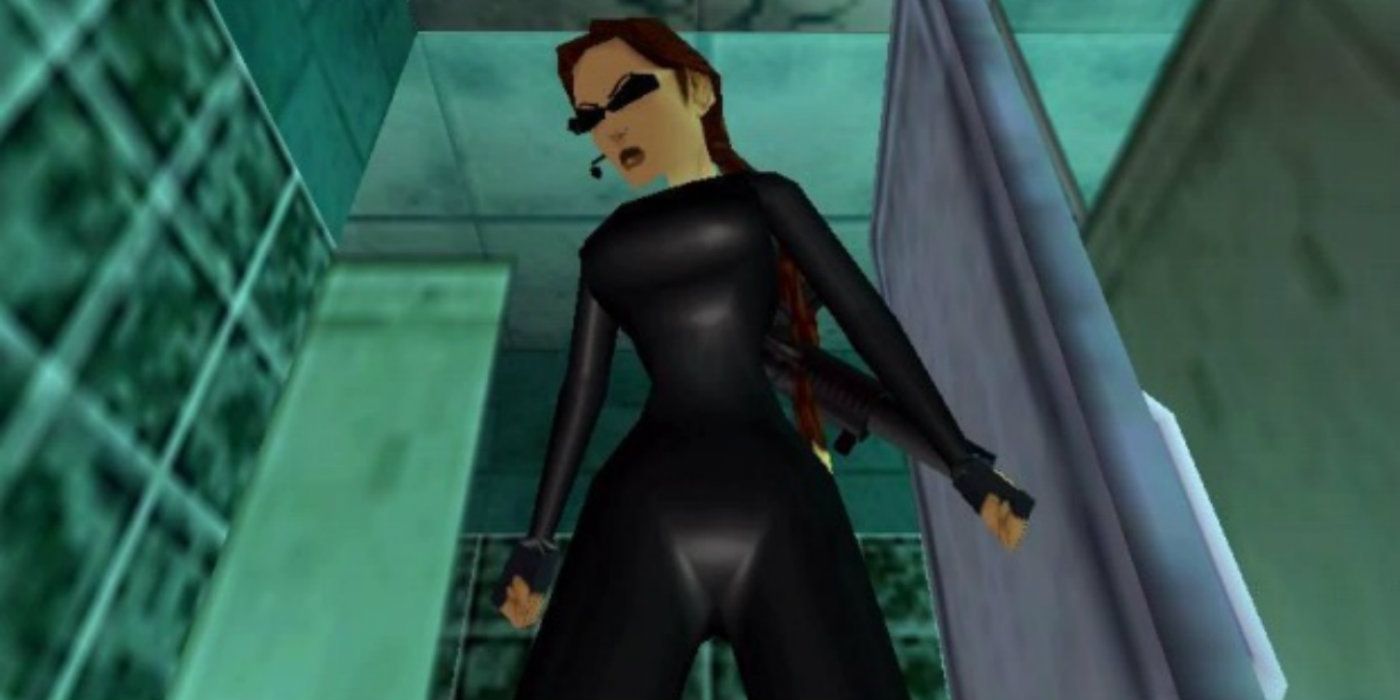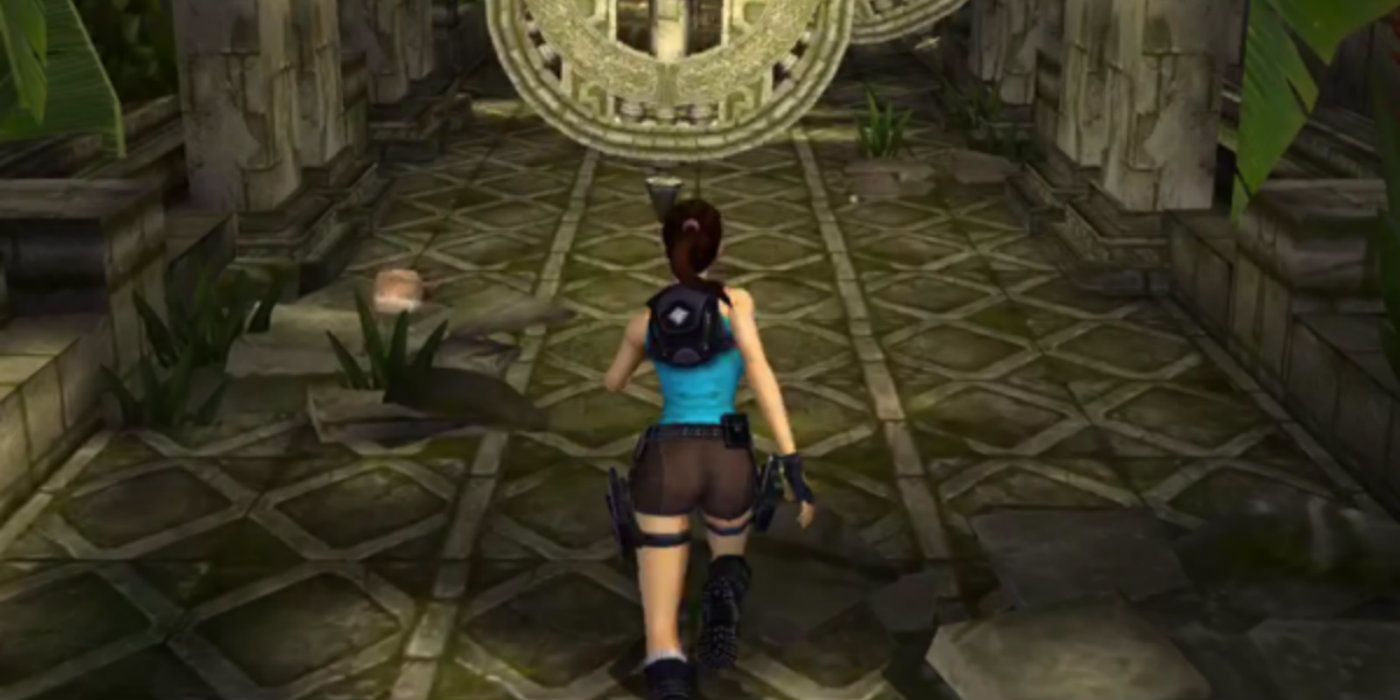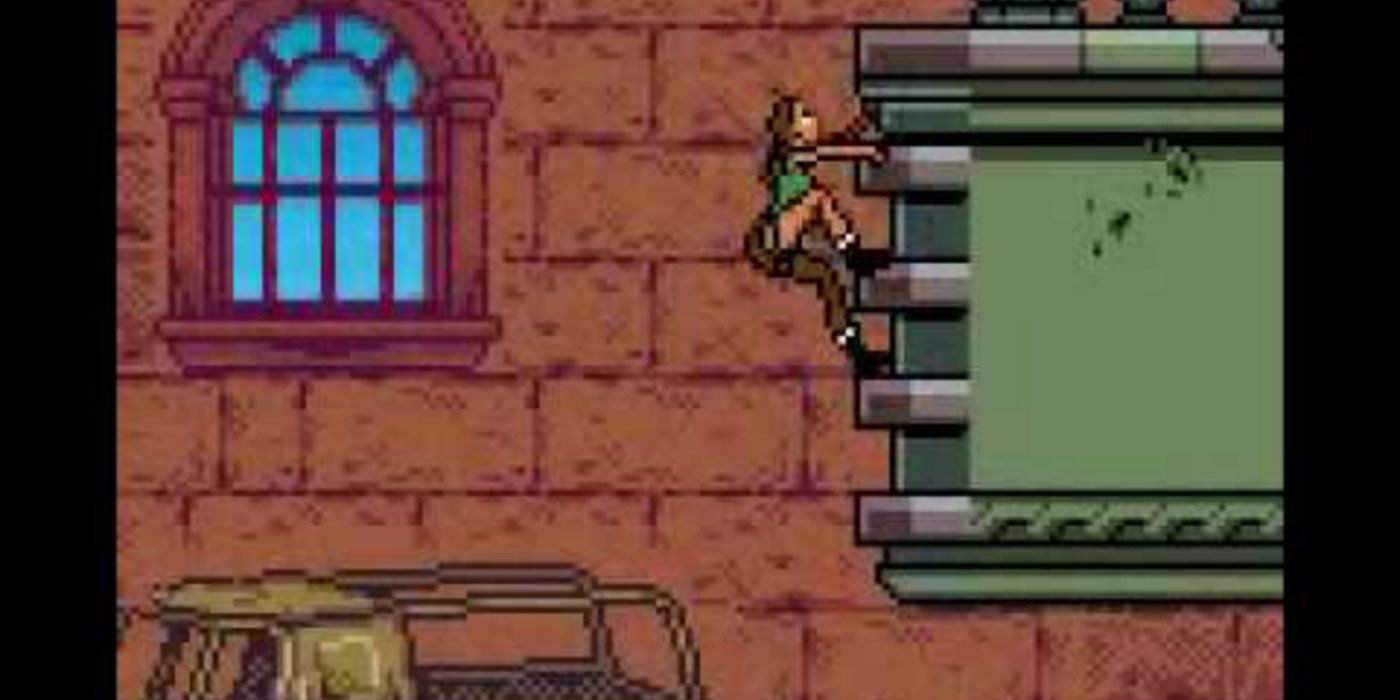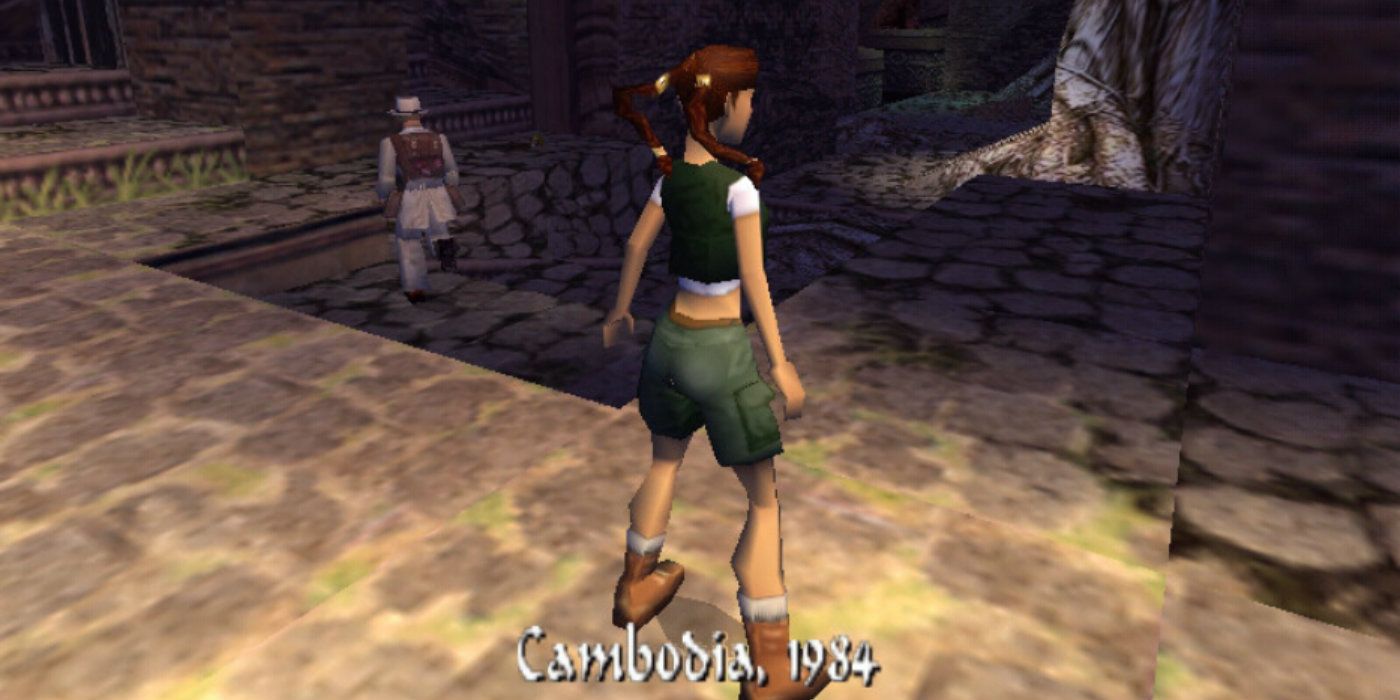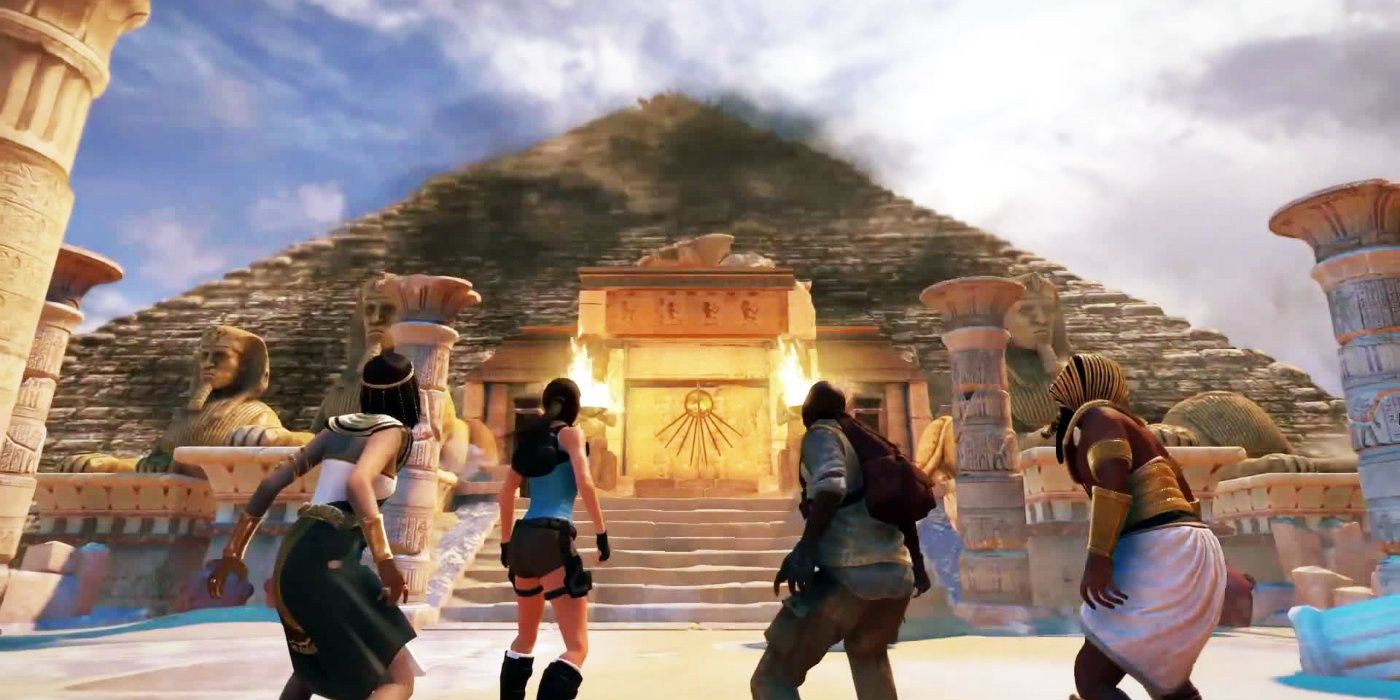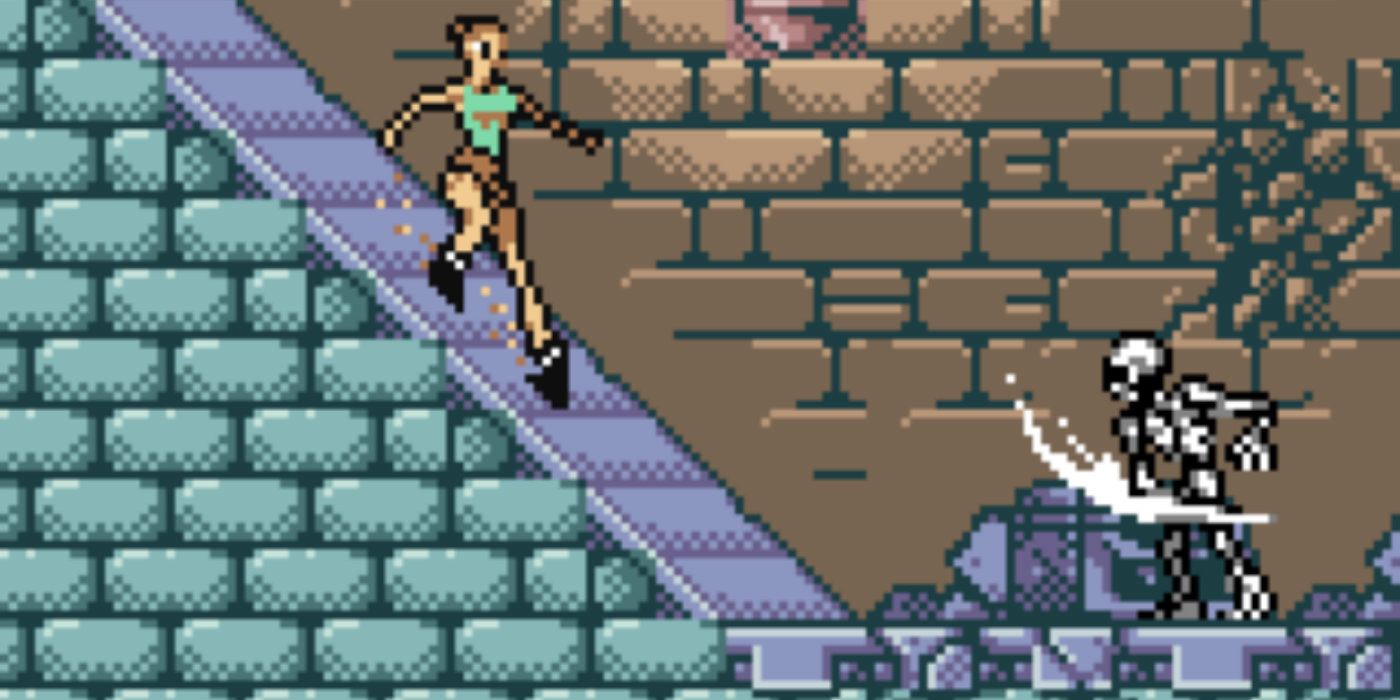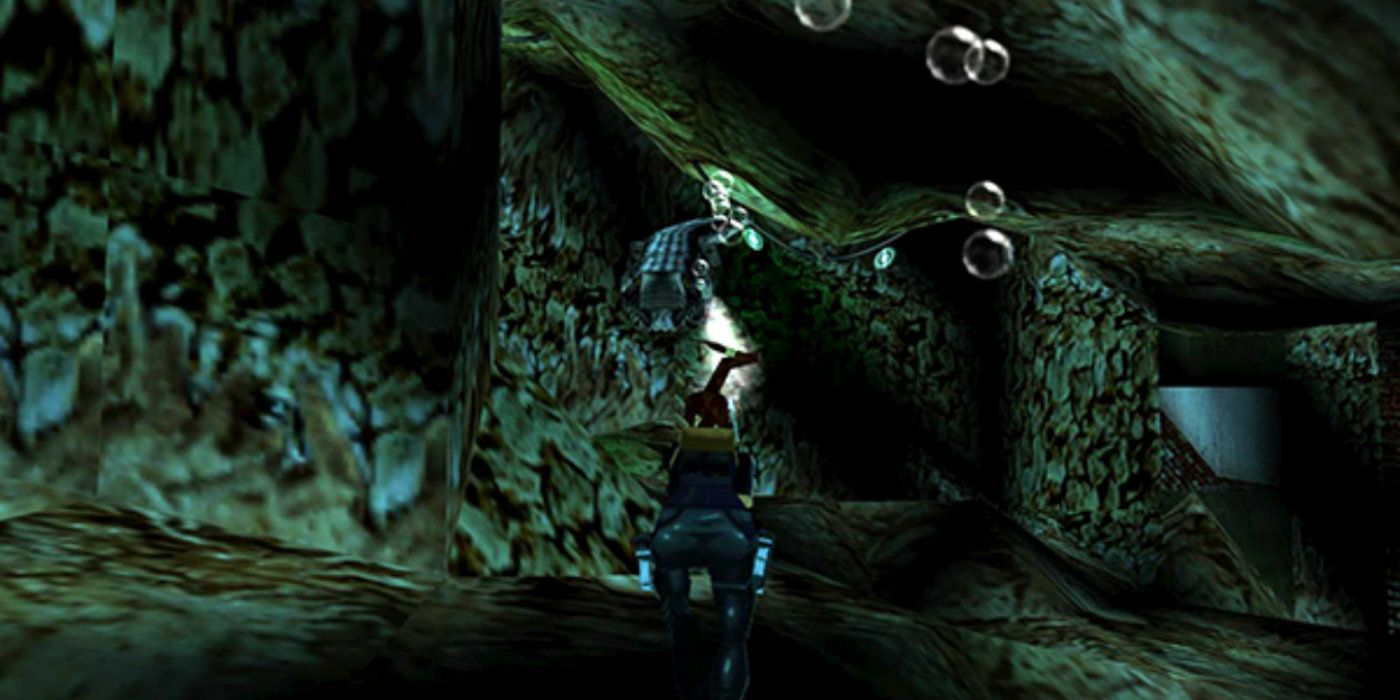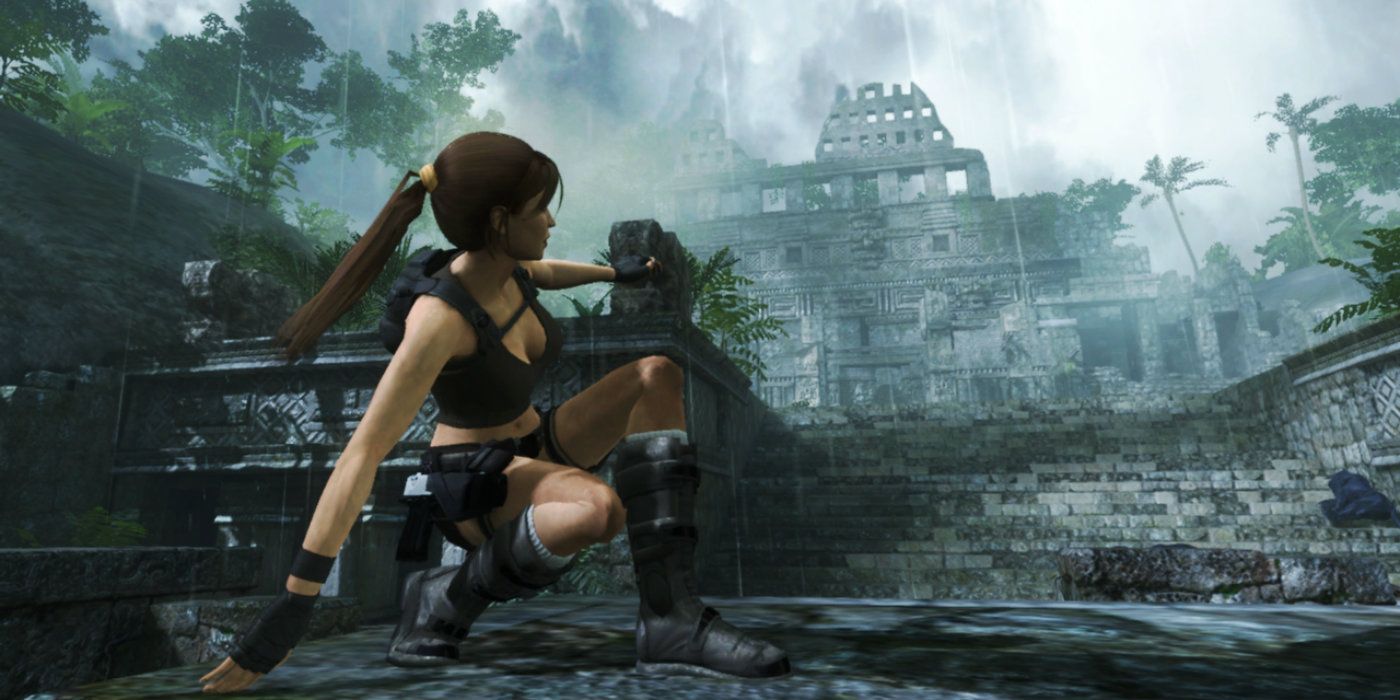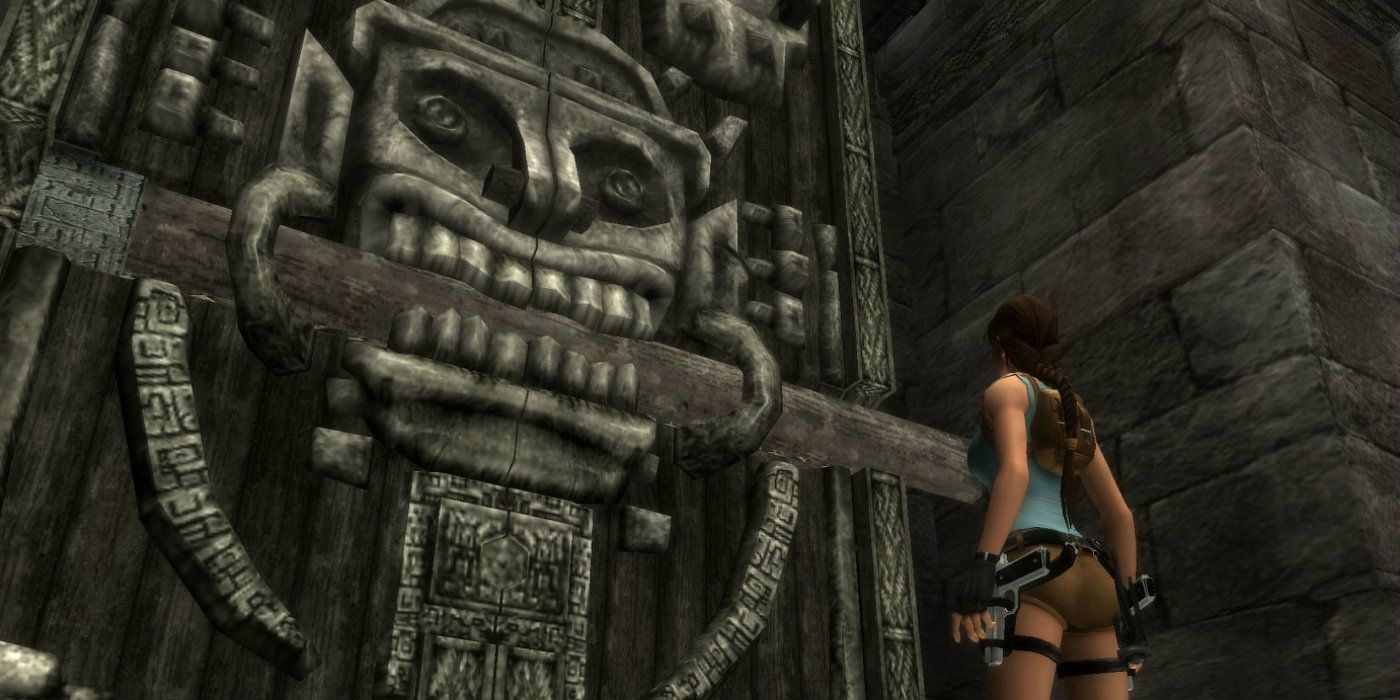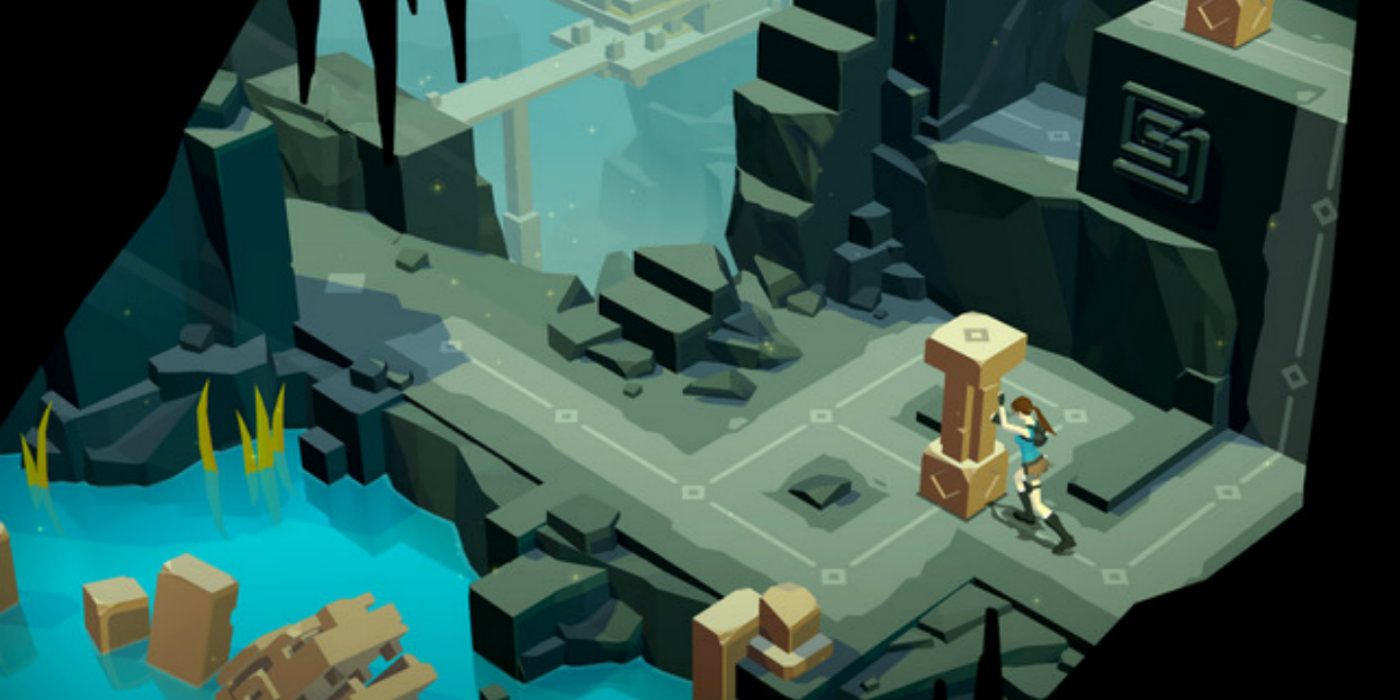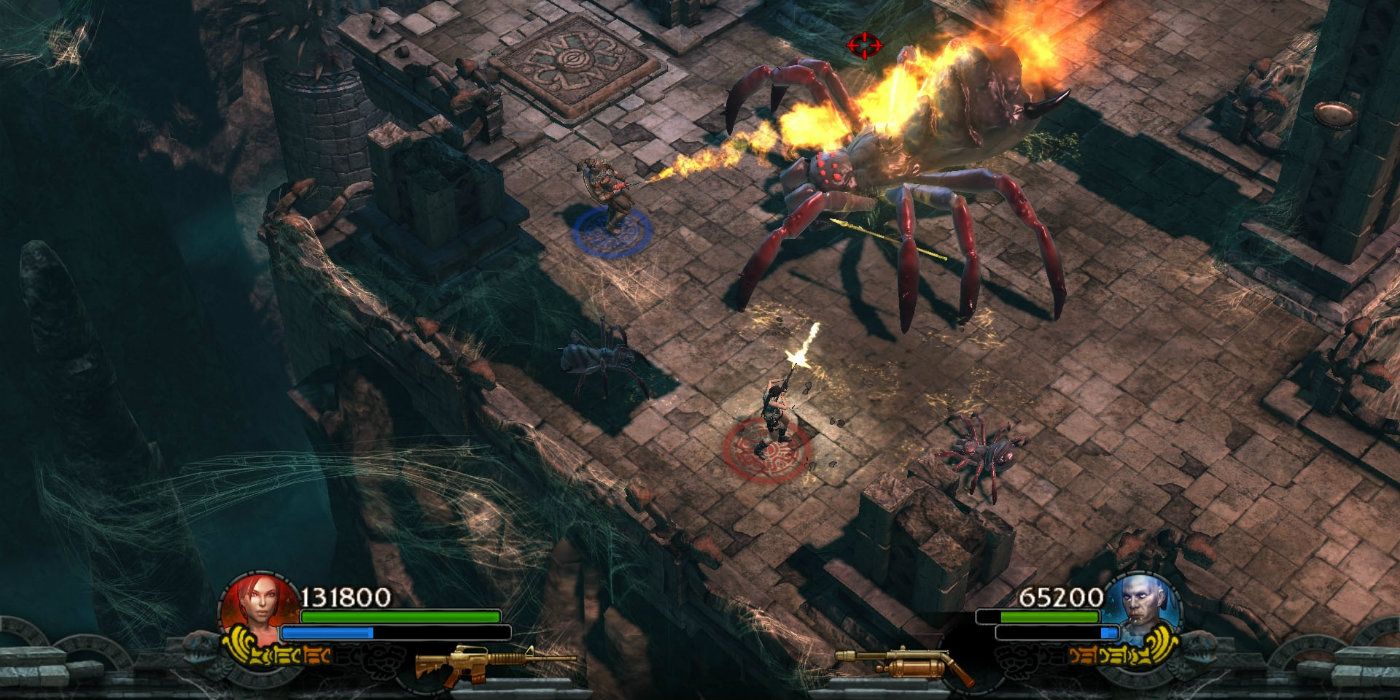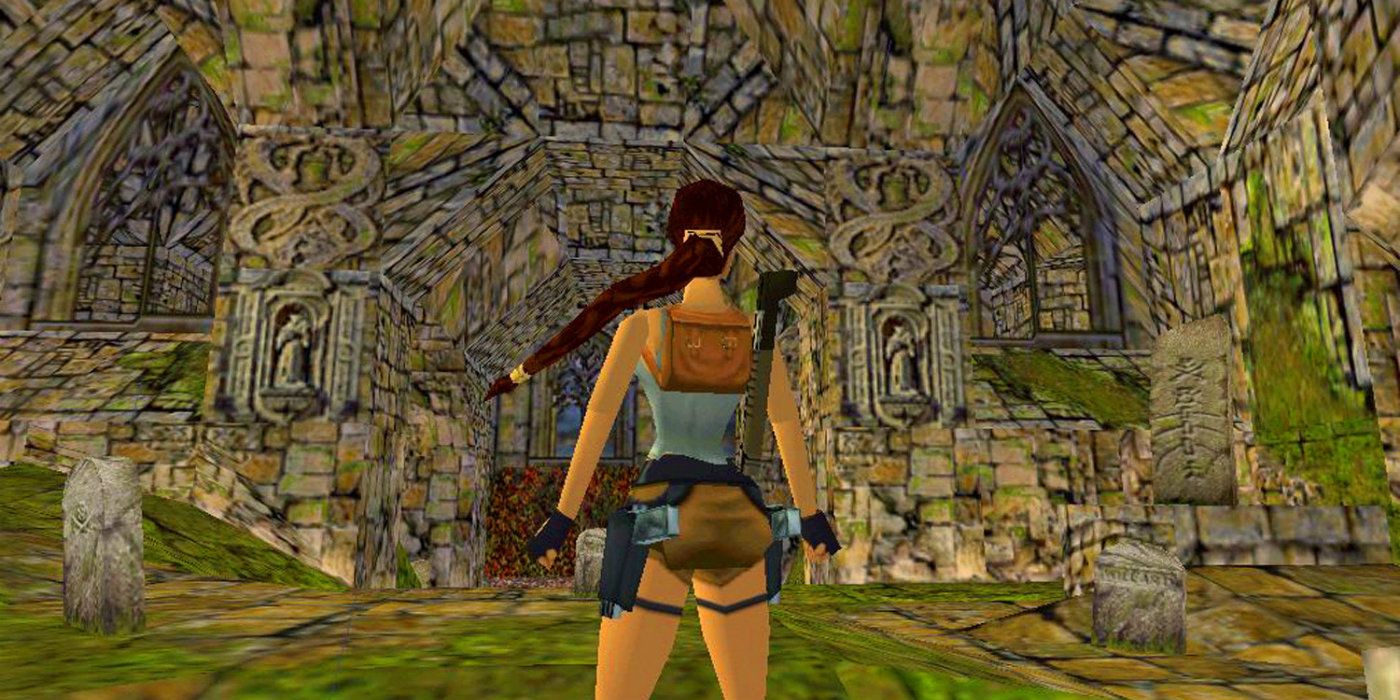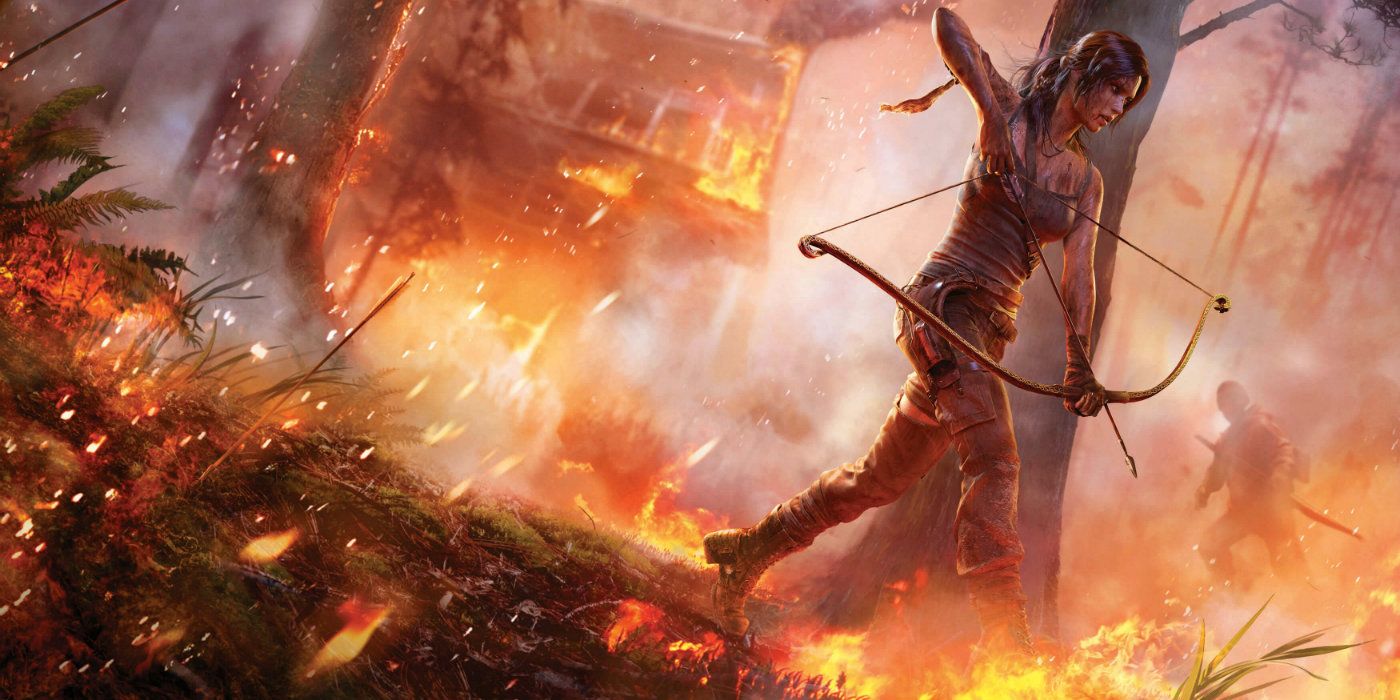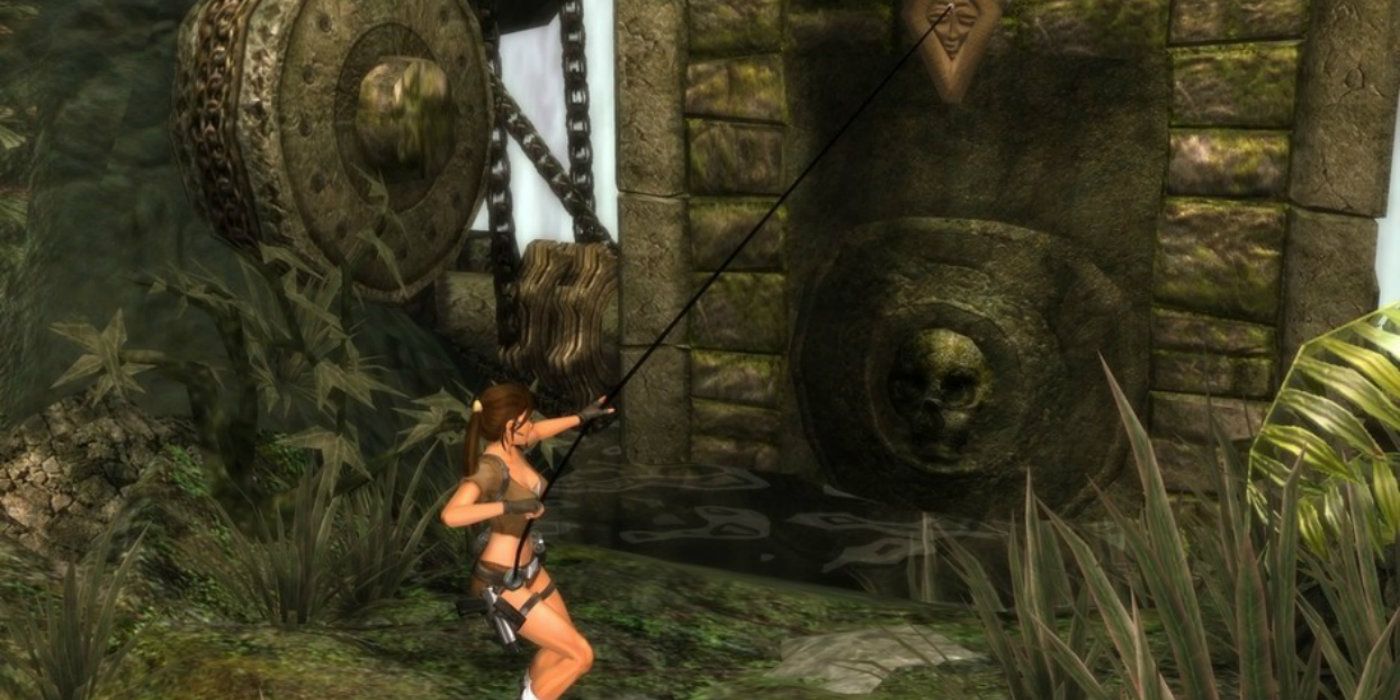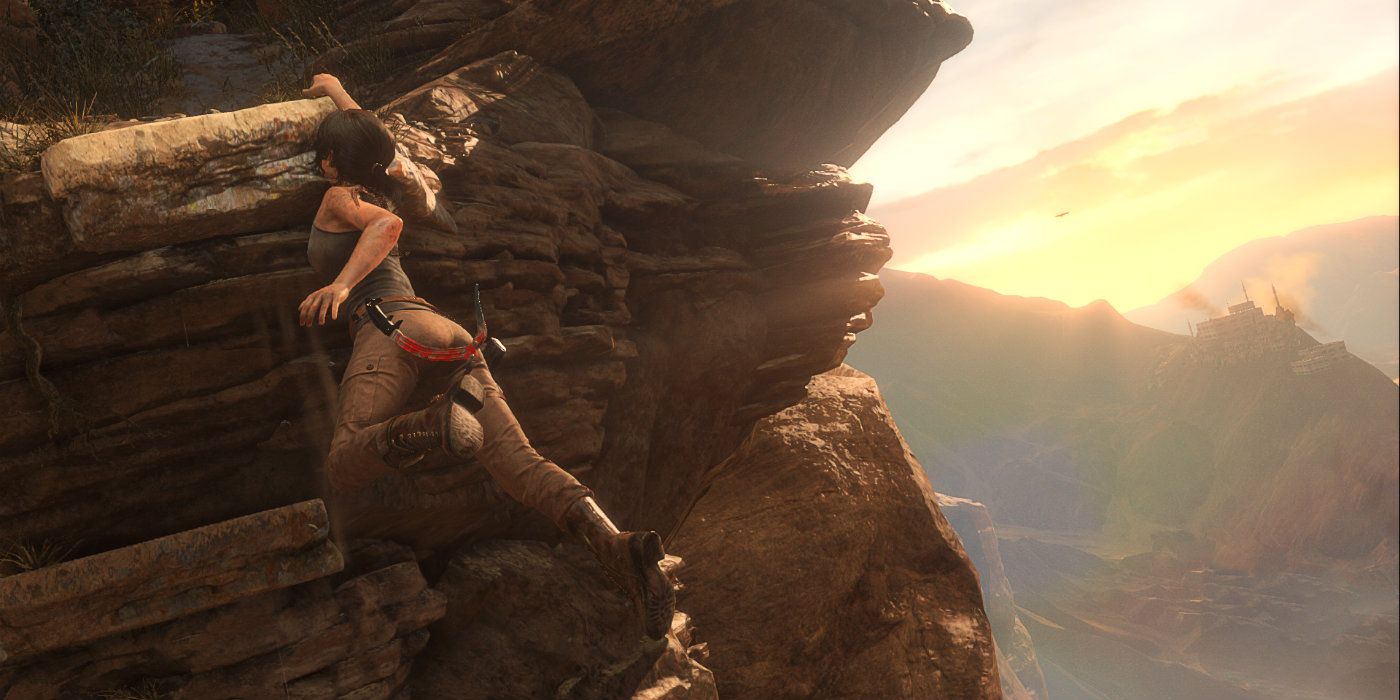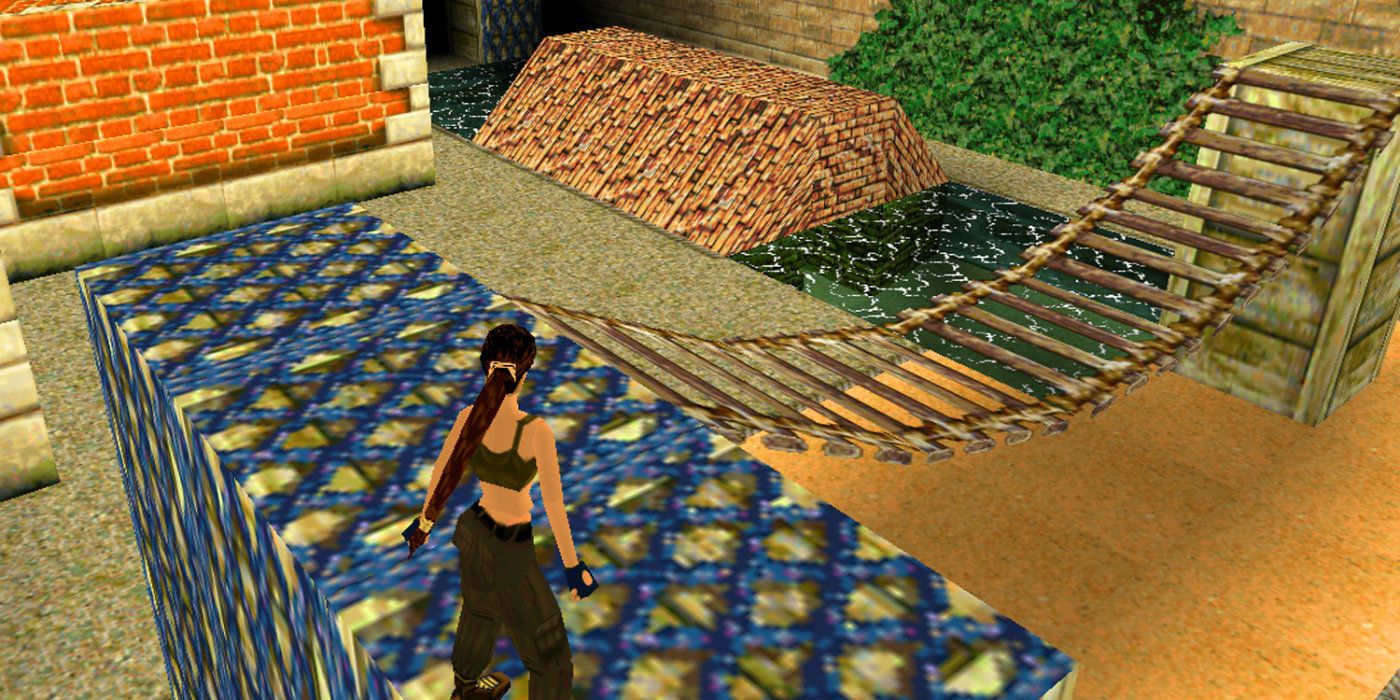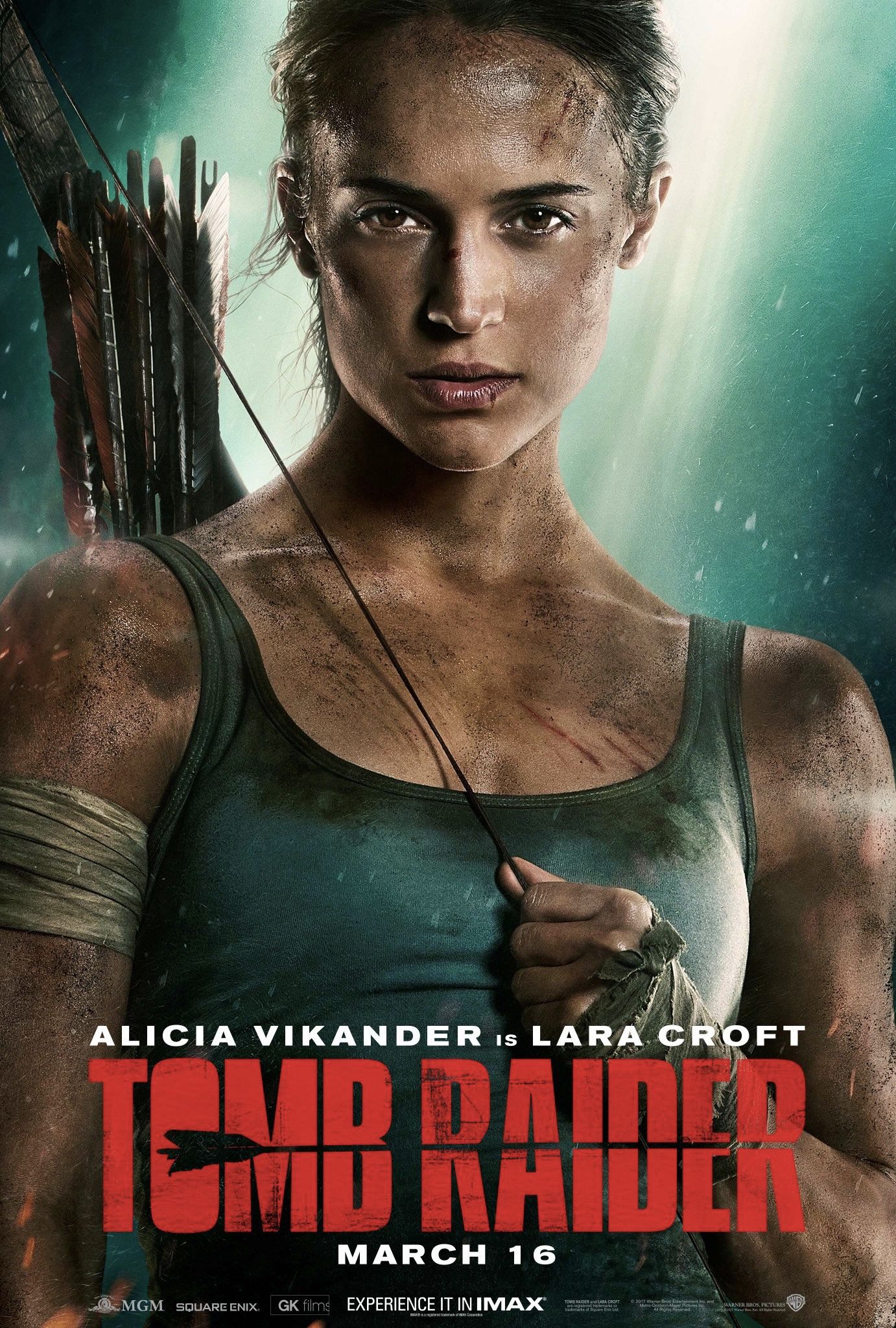For over 20 year now, Tomb Raider and Lara Croft have been among gaming's most popular franchises and characters, respectively. It's easy to take for granted now just what a big deal it was in 1996 to let players navigate huge 3D environments, with a then-unprecedented amount of moves at their disposal to help them scale walls, shimmy across ledges, and push blocks. It's also easy to forget what a big deal it still is to have a video game character be recognized as a legitimate celebrity in their own right, appearing in non-gaming magazines and commercials "as herself," outside of the context of her games.
What is perhaps even more impressive than Lara's rise to celebrity status is how the Tomb Raider games managed to continue for years after the spotlight on her had dimmed. Few video game franchises have gotten as many chances at a comeback as TR has, and even fewer have been able to bounce back from some pretty embarrassing low points. But Tomb Raider persists, reinventing itself as needed every generation or two and coming back as strong as ever.
Here is Every Tomb Raider Video Game, Ranked Worst to Best.
18. Tomb Raider: Angel of Darkness
After cranking out a whopping seven Tomb Raider games in just as many years, developer Core Design was just as burnt out on the franchise as the public was. Much of the problem was that the team had already done everything there was to do with the formula on the aging PlayStation hardware, and with the move to the PlayStation 2, it was the perfect opportunity to reinvigorate the franchise with a new, different type of Tomb Raider.
Unfortunately, publisher Eidos wasn't willing to let a calendar year come and go without a Tomb Raider release, and rushed the team to get Angel of Darkness finished by Christmas 2003. The result was a disaster on almost all fronts, with only the story getting any real acclaim. Play control still felt stuck in the previous generation as compared to newer, better games like Prince of Persia: Sands of Time-- especially evident in the dreadful stealth sections. But the worst offender was just an overall lack of polish, full of glitches and bugs common among games that are released before they are ready-- and you couldn't patch console games in 2003 like you can now, so a buggy game stayed a buggy forever.
Angel of Darkness was such a failure that Core Design was taken off the franchise permanently, and the series was given a three year break to lick its wounds.
17. Tomb Raider: The Prophecy
Released the year before Angel of Darkness-- during what remains the franchise's lowest point-- Prophecy is an overall underwhelming game redeemed slightly by its hardware. While portable Tomb Raider games would soon be able to go full 3D like their TV- and PC monitor-based counterparts with the advent of Sony's PlayStation Portable, 2002 was still Game Boy Advance territory-- and so Tomb Raider on-the-go had to be in two dimensions.
Unlike the side-scrolling Curse of the Sword for Game Boy Color, Prophecy opted for a 3D-ish compromise by showing the action from an overhead, isometric viewpoint. This simulated Lara moving around in 3D space about as well as the GBA was capable of, and gave Prophecy the opportunity to have more puzzles than a side-scroller would typically allow. Unfortunately, the bulk of the puzzles were of the "get to a closed door, find the switch for said door, then pull the switch and go through the door" variety, which gets old very quickly-- especially when the action that takes place between switch-pulling is also equally unsatisfying.
There's also something to be said for Lara's personality and attitude being much of what makes TR games enjoyable, and with both missing from Prophecy, there was just very little to keep people playing.
16. Tomb Raider Chronicles
The last few TR games of the initial run weren't bad games, they just felt very "been there, done that." Core Design never had enough time to actually create a new engine for the series, and so they spent four years building new games from an existing engine. By 2000, an engine created in 1996 was definitely beginning to show its age, to say the least.
The premise of Chronicles is somewhat interesting, taking players through various events in Lara's past-- she is presumed dead after the previous game-- and offers an excuse to jump around to a variety of locales and setpieces that don't have to be connected in any logical way. But by and large, the game just goes through the motions, recycling the same gameplay, environments, and puzzles that fans had done four times already. Chronicles only sold about 1.5 million copies, which for a Tomb Raider game during that time was akin to a Star Wars movie that doesn't gross nine figures at the box office.
It's worth noting that the PC version of Chronicles included a level editor which brought a little bit of innovation to the otherwise stale package, but it required a pretty hefty time investment to learn, let alone actually make anything.
15. Lara Croft: Relic Run
Full disclosure: We left the trio of 2003 Java Tomb Raider mobile games off of this list. In the vast majority of cases, games from that era are best forgotten; seldom remembered as worthwhile parts of a game franchise's legacy-- there is a reason why almost nobody acknowledges the Java God of War or Castlevania games anymore.
In the first of the two original TR mobile games to be worthy of this list, Relic Run took the easy route and dropped Lara Croft into a forward-scrolling endless runner in the vein of Temple Run-- they didn't even bother to change the name all that much. This free-to-play mobile title has Lara automatically running forward, with the player controlling when she jumps, slides, wall-runs, and attacks enemies, all with basic touchscreen controls.
Like other similar re-skinnings of existing mobile titles into better-known video game properties, Relic Run does what it sets out to do, which is let fans of the franchise kill some time in five minute bursts while riding the bus or sitting on the toilet. And the price is definitely right. Sure, you can grab mobile ports of TR and TRII for only 99 cents each on most mobile storefronts, but good luck playing those games with touchscreen controls.
14. Tomb Raider: Curse of the Sword
As Tomb Raider was essentially an attempt to bring the traversal-based gameplay of Prince of Persia into 3D, it stood to reason that a 2D Tomb Raider would play a lot like classic Prince of Persia games. The second of the two surprisingly good TR games for Game Boy Color wasn't quite as good as the first simply due to it losing a bit of the novelty, but it was still a very respectable attempt to take a game that was all about big, 3D environments and shrink it down to a 2D platformer.
Taking further inspiration from the source material, the animation in Curse of the Sword is incredibly fluid and lifelike. They even managed to work breast physics into a Game Boy Color game, which is funny since Lara's chest didn't even jiggle in the console versions at this point. When developers really put their minds to it, they were capable some really interesting GBC ports of AAA console games, and this was definitely one of those times. Curse of the Sword feels exactly how you'd imagine a Super NES version of Tomb Raider would've looked and played.
13. Tomb Raider: The Last Revelation
While the Tomb Raider series was already getting a bit long in the tooth by this fourth installment, Lara still had some new tricks to help keep things fresh. One of the biggest additions was the ability to shimmy around corners-- which seems trivial now, but was a big deal to anyone who had grown tired of that arbitrary limitation in previous installments. Levels also now had multiple routes, and could be revisited at any time once completed, rather than there only being one linear path through the entire game. And Lara herself also had never looked better, with her legs and arms finally looking like attached, cohesive limbs, rather than the action figure-like elbows and knees of previous versions.
All that said, this was the fourth TR game in four years, and despite the improvements, the series had already begun to feel a bit stale. Some fans argue that this game was an improvement over the previous year's Tomb Raider III, but since the aging franchise was yet another year behind the rest of the video game industry, Revelation seems even worse in comparison to its peers. And that's not even getting into how little time Lara spent in anything resembling tombs or doing anything resembling spelunking in this game, getting ever-further away from the original point of the series.
12. Lara Croft and the Temple of Osiris
Following up the surprisingly good downloadable title Lara Croft and the Guardian of Light and replicating that game's basic premise, Temple of Osiris takes place from an overheard perspective and focuses on solving puzzles as a team. Osiris upped Guardian's player count from two to four, which is the first way that it took a step down quality-wise. Four people trying to tackle puzzles together is just too chaotic, which is why most four-player co-op games tend to be more of the action-heavy variety--Gauntlet, Left 4 Dead, etc. Sure, you don't have to play with four people, but the game had to be built with four people in mind, which makes the tight puzzles of the first game feel a little less satisfying.
The other problem is that the game just isn't all that fun to play alone. No, it's not designed to be, but Guardian still managed to be a decent solo experience in addition to its multiplayer fun. Osiris being essentially worthless as a solo affair doesn't make it a bad game by any means, it just makes it inferior to the better Tomb Raider games.
11. Tomb Raider (2000)
The first portable Tomb Raider game isn't quite as visually impressive or as grand in scope as the other Game Boy Color entry in the franchise, but something about it just felt more special. It is essentially Prince of Persia with guns, a female lead, and more than just one type of environment. This might be considered blasphemy, but in a lot of ways Tomb Raider for GBC actually surpasses that classic. With levels that scroll instead of just taking place one static screen at a time, the trial-and-error nature and fear of blindly stumbling upon a trap two steps into the new screen of PoP infamy were taken out of the equation.
While Game Boy Color games aren't quite as timeless as NES games, the best ones still hold up better than many of the 3D games released around the same time. To that end, those looking to revisit Lara's early adventures might actually find Tomb Raider for GBC to be easier to enjoy and appreciate than the unaltered original PlayStation games.
10. Tomb Raider III: Adventures of Lara Croft
Some Tomb Raider fans didn't like the increased action of the second game, and as such, TRIII brought a renewed focus on puzzle-solving back into the mix. TRIII was also the first game in the series to experiment with levels that weren't quite so linear, and had a little more flexibility in how they could be tackled. The series' engine hadn't quite started to show its age yet, and the improvements to both the controls and the visuals meant that this installment still felt almost cutting-edge -- the last time for probably a decade.
While TRIII had all the makings to be Lara's best adventure yet, a few unfortunate design decisions kept it from achieving that lofty goal. The biggest offender was how much of the game is spent underwater-- the swimming portions are the worst parts of most video games that have underwater settings, so it's always a dicey proposition to have a game that is heavy on being submerged. Lara's stiff controls just didn't facilitate swimming especially well, especially when dealing with enemies underwater, and all of that time spent swimming really dragged down TRIII's overall quality.
Otherwise, TRIII was a solid end to what would become the trilogy of accessible, universally liked games.
9. Tomb Raider Underworld
There tends to be pretty clearly-defined "eras" of Tomb Raider games, where a stretch of games have a similar visual and play control style and feel like their own subseries. Underworld is kind of odd in that it technically is a continuation of the TR era that began with Legend and Anniversary, but since it is built with an entirely new engine, it doesn't feel as connected to those two games. So Underworld was stuck in this strange spot where it was more than just a sequel, but didn't quite do enough new stuff to be a complete reinvention.
As for the game itself, Underworld is a solid entry in the franchise and further cemented TR's second coming as a viable game franchise. It builds on the solid framework from the previous two games, and uses the added horsepower of the then-next-gen consoles to really expand the scope of the adventure. The only real issue is that Underworld was released in a post-Uncharted world; that franchise completely reinvented this style of game and had much better combat than Underworld-- and certainly a better story.
The other issue was Lara as a character; still hanging onto her impossible figure, ridiculous outfits, flawless complexion, and overly plump lips, which didn't fit with the realistic look of her competitors-- or the rest of her own game, really.
8. Tomb Raider Anniversary
Legend-- the first major Tomb Raider reboot after the franchise had taken a three-year break following the failure of Angel of Darkness- -had completely reinvigorated the brand, in large part on the strength of its fantastic new engine. Since the original TR didn't age particularly well, the developers decided that Lara's first adventure deserved to be revisited with modern controls and visuals-- and thus, it was half-remade, half-re-imagined as Tomb Raider Anniversary.
Anniversary is essentially Tomb Raider 1 rebuilt with the Legend engine, and all of the added gameplay wrinkles that come with it. Of course, the environments from the original game and their associated puzzles had to be completely re-thought in order to allow for all of the new moves at Lara's disposal. Viewed as a something of a TR1 level pack for Legend, Anniversary is neat little tribute to the original while also being a nice way to get more Legend-style content. But when compared to stellar remakes like Metroid: Zero Mission and 2002's Resident Evil, Anniversary felt a little by-the-numbers; not quite going far enough to truly modernize and reinvent the original.
Judging Anniversary purely on its own merits, it's a great TR game. Judging it for what it could have been, it feels a bit disappointing. Meeting somewhere in the middle fittingly puts it near the middle of this list.
7. Lara Croft Go
The best mobile spin-offs of AAA game franchises are the ones that do something different with the formula, more directly suited to the platform. After Square-Enix hit on something interesting with Hitman Go, which saw them taking their stealth action franchise and transforming it into a turn-based puzzle game, the company decided to apply that formula to Tomb Raider in bringing it to mobile devices.
Lara Croft is arguably an even better fit than Agent 47 in the world of strategy games, as the TR games have always had a major puzzle-solving element anyway. Lara Croft Go brilliantly boils down the essence of TR to Lara trying to plan out her route across trap- and enemy-filled environments, one step at a time. It's more realistic way for an adventurer like Lara to traverse a dangerous environment, rather than tackling challenges by taking leaps of faith and winging her every move as she does in her other games.
The only consistent complaint about this highly-acclaimed game is its short length, which is somewhat expected of a mobile game but became a bit more glaring of an issue when it was ported to PS4 and PS Vita. As a mobile game, however, Lara Croft Go is one of the best out there, and rightfully won a slew of awards, including Apple naming it the best iPhone game of 2015.
6. Lara Croft and the Guardian of Light
Taking a more "arcade-style" approach to an existing franchise doesn't always work out for the best. Assassin's Creed, Red Faction, and Burnout are three examples of great franchises that faltered in their attempt to branch out as scaled-down, downloadable arcade-style titles. However, one of the best examples of a franchise doing something great with that format is Lara Croft and the Guardian of Light.
Lara Croft has always been marketed as an adventurer, but Guardian of Light was the first TR game that felt like an actual "adventure game." Focusing mostly on puzzle-solving and secret-finding, with only slight bursts of action, Guardian already had all of the makings to be one of the best Tomb Raider games ever. Adding in wonderfully-executed co-op play was the icing on the cake, showing a whole new-- and long overdue-- side of the franchise. And like any great game of its style, the multitude of cleverly-hidden secrets gives Guardian sky-high replay value, especially if you have a reliable partner to tackle the game with.
The follow-up Temple of Osiris may have been a bit of a letdown, but here's hoping that we see more lighthearted "Lara Croft and the..." games to complement her AAA exploits-- especially since those have gotten so serious and heavy.
5. Tomb Raider (1996)
We've made multiple references to how poorly the first Tomb Raider has aged, but any list like this should take into account a game's legacy, not just how well it does or doesn't play today. It wouldn't be fair to disregard just how epic and groundbreaking Tomb Raider was in 1996, and how satisfying an adventure it was for anyone who played when it was still fresh and new. None of the other games would even exist, if it weren't for the fact that TR1 not only existed, but was great and made such a huge impact.
Even after Super Mario 64 announced the arrival of 3D games in large 3D worlds, much of the rest of the industry took baby steps into the third dimension, with fully-3D games not becoming the norm for several more years. But Lara wasn't afraid; she dove right into the daunting task mere months after Mario's 3D debut-- and absolutely nailed it.
Tomb Raider also announced the arrival of gaming's newest superstar, making one of the grandest entrances of any game character ever.
4. Tomb Raider (2013)
As mentioned before, Tomb Raider was riding a second wave of success in the 2000s until Uncharted came along and changed the way people thought about traversal-based action/adventure games starring good-looking spelunkers. As Uncharted borrowed plenty from Tomb Raider, it was only fair that TR returned the favor when it went through its second and most drastic reboot in 2013.
Completely starting from scratch and telling the story of a young woman named Lara Croft becoming a skilled, world-weary adventurer, TR '13 is an unflinching look at an innocent girl being forced to very quickly mature into a hardened woman. The emotional aftermath of the first time Lara is forced to take a life is among the most effective portrayals of its kind, in video games or otherwise.
But beyond the engrossing story and compelling character development, TR '13 is also a legitimate TR game in its own right, not only raising itself to Uncharted's level but actually surpassing it in some areas-- Lara climbs and shimmies better than Nathan Drake, no doubt about it. Much like the problems that plague the seemingly endless Spider-Man reboots, no matter how good TR '13's story is, it still feels a little too much like retreading well-worn ground-- but when that's the worst thing you can say about a game, it's an easy flaw to forgive.
3. Tomb Raider Legend
It often only takes one bad game to kill a franchise completely, no matter how popular it might have been. Angel of Darkness could've very well been the curtain call for Lara Croft, but fortunately, Eidos wasn't ready to give up on her just yet. They ditched developer Core Design and put the series in the capable hands of Crystal Dynamics, which had proven itself with a track record including hit games like Gex, Pandemonium, and most relevantly, the excellent Tomb Raider-esque Legacy of Kain: Soul Reaver.
Under the guiding hand of Tomb Raider creator Toby Gard-- who was back after leaving the series during development of TR2-- the team did the seemingly impossible, and created a TR game that brought the series back from the dead with one of its best installments ever. Among the many improvements to the classic TR formula was full 3D movement-- no more rigid, grid-based gameplay-- and puzzles that relied on realistic physics, the latter of which was novel for video games at the time.
It only took six years, but Tomb Raider had finally become a legitimate 21st-century video game franchise, and Lara Croft was officially back.
2. Rise of the Tomb Raider
With all of the pesky origin stuff out of the way-- capably handled in the fantastic Tomb Raider '13-- it was time for the newest incarnation of the franchise and its heroine to fully come into their own. On that task, Rise of the Tomb Raider rose to the occasion. Everything that made the previous game great was not only back, but greatly improved upon, and Lara was now free to spend all of her time actually being a tomb raider rather than just becoming one.
Glowing critical praise flowed in, some of the best in franchise history, with Time Magazine even giving the game a coveted spot on its "50 Best Videogames of All-Time" list (the only TR game the publication chose for the list). Despite being released alongside some of the toughest competition of its career, Rise proved that TR could take on all comers and still be at the top of its game 20 years on.
Rise might not have overtaken current genre king Uncharted 2, but there's a pretty good case to make for it being that masterpiece's first runner-up. And with most signs pointing to the adventures of Nathan Drake having come to a close with 2016's Uncharted 4, Lara is poised to once again take her genre back.
1. Tomb Raider II
Lara Croft's second adventure remains her best. Tomb Raider II did what any great video game sequel does and delivered a "bigger, better, more" version of its predecessor. The increased focus on gunplay was a slightly divisive decision, as was bringing a lot of the action outside of tombs and caves, but both design decisions were necessary in order to deliver an experience that wasn't just Tomb Raider 1.5.
Lara was certainly a full-fledged superstar, but this was the last time for a long time where she still felt more like a legitimate video game character who happened to have a side career as a pin-up girl rather than the other way around. That distinction is important, as once she started becoming a headliner of her games rather than just a part of them, the essence of what made the games great was lost and the series just became a series of setpieces designed around how to make her look as cool and as sexy as possible. TR2 was still designed around the best gaming experience rather than the best "Lara Croft experience," which is half of what made this game so great.
The other half? Lara's mansion. Spending hours wandering around Lara's mansion, learning the controls, finding secrets, and annoying her poor old butler was some of the most fun to be had in the entire history of the series.
---
Which Tomb Raider game is your favorite? Let us know in the comments!

